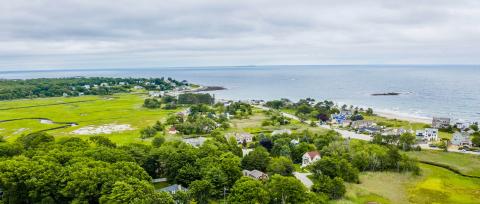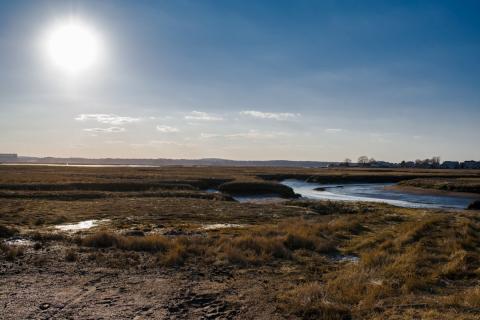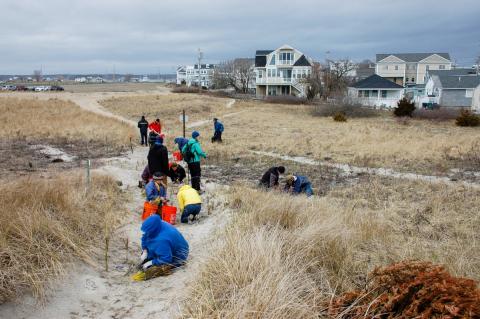
What is LTAP?
The NH Coastal Landowner Technical Assistance Program (LTAP) seeks to provide consistent, technical assistance to interested coastal landowners to help understand potential coastal flood risks and restoration opportunities, clarify goals for managing their property, and identify conceptual options that may enhance the resilience of their properties, neighborhoods, and community’s natural resources.
LTAP will provide equitable technical assistance, information, tools, and contacts to landowners to help them:
- Reduce individual and community flood risk
- Utilize nature-based approaches to mitigate erosion and flood risk
- Restore natural habitats to enhance the resilience of native ecosystems
- Sign up for the program by contacting NHDES Coastal Program Resilience Coordinator Aidan Barry at aidan.t.barry@des.nh.gov or (603) 559-9189.
- Aidan will send you a pre-visit questionnaire; complete and submit the pre-visit questionnaire.
- Schedule site visit and prepare a list of your questions for the program staff.
- Participate in a one-hour Assessment Site Visit:
- Walk your property to visit important sites with program staff.
- Review your property questions with program staff.
- Review property risk information provided by program staff.
- Participate in an exercise to clarify your property goals and limitations with program staff.
- Schedule your Recommendations Meeting.
- Participate in a one-hour Recommendations Meeting
- Revisit important sites on the property with program staff, if needed, or meet virtually.
- Program staff will provide a set of recommendations for approaches to consider on your property that may help you achieve your goals.
- Discuss possible next steps with program staff.
-
Complete a follow up questionnaire.
Important Note About Site Visits
The landowner or a designee must be present for both site visits. We encourage other family members or neighbors to participate in the site visit(s) as well, if the landowner chooses to invite them.
The Program Can Help:
- Clarify your goals and identify opportunities and limitations to achieve those goals
- Evaluate and provide information about current and future flood risk, including:
- Simple evaluation of the site risks and vulnerabilities, including flood zones and base flood elevations, possible drainage issues, and other factors to consider
- Basic information about local geography and ecology and their natural
- Ranges of possible future sea-level rise extents and depths in your neighborhood
- Tide charts, real-time tide gauge information, and municipal emergency alert systems
- Obtain basic information about existing regulations/requirements and people to contact next
- Identify additional information you need to be able to make an informed decision about your next steps
- Come up with recommendations for possible actions to take to help you achieve your goals informed by the context you are willing to provide (what you’ve already done, your timeline, etc.)
- Identify possible unintended consequences of actions
The Program Will Not:
- Complete work that would otherwise typically be conducted by a consultant/contractor such as conduct a detailed site survey or complete an elevation certificate; no survey equipment will be used as part of this program
- Develop project designs or detailed cost estimates
- Give definitive answers about whether specific projects are permit-able and/or what kinds of permits they require at both the local and state levels
- Provide a definitive answer about whether your property will or won’t flood or be damaged in a given time frame or provide a guarantee that a specific strategy will or won’t work
-
Make a decision for you about the next step to take on your property
view/download 'LTAP' INFO as a pdF
Erosion Monitoring Guides
Learn to monitor erosion on your own property with these guides:
Contacts
Aidan Barry
Coastal Resilience & Habitat Specialist
NH Coastal Program
NH Department of Environmental Services
aidan.t.barry@des.nh.gov
(603) 559-9189
Kirsten Howard
Coastal Resilience Coordinator
NH Coastal Program
NH Department of Environmental Services
kirsten.howard@des.nh.gov
(603) 559-0020
Alyson Eberhardt, Ph.D.
Coastal Ecosystems Extension Specialist
NH Sea Grant & UNH Extension
alyson.eberhardt@unh.edu
(603) 862-6709

